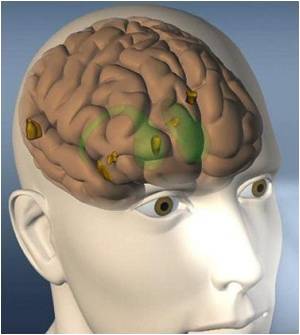
The results were published in two separate studies in the journal ACS Chemical Neuroscience.
“These studies present compelling data on the first oral, brain-penetrating inhibitor to show significant efficacy in preventing neurodegeneration in both mouse and rat models of Parkinson’s disease,” said team leader Philip LoGrasso, a professor in the Department of Molecular Therapeutics and senior director for drug discovery at Scripps Florida. “The compound offers one of the best opportunities we have for the development of an effective neuroprotective treatment.”
The new small molecule — labeled SR-3306 — is aimed at inhibiting a class of enzymes called c-jun-N-terminal kinases (JNK). Pronounced “junk,” these enzymes have been shown to play an important role in neuron (nerve cell) survival. As such, they have become a highly viable target for drugs to treat neurodegenerative disorders such as Parkinson’s disease.
“A drug like SR-3306 that prevents neurodegeneration would be a quantum leap in the clinical treatment of Parkinson’s because all current therapies treat only the symptoms of the disease, not the underlying pathologies,” LoGrasso said.
Patients with Parkinson’s disease suffer from the loss of a group of neurons in the substantia nigra pars compacta (SNpc), part of the midbrain involved in motor control. These cells produce dopamine, a neurotransmitter that plays a key role in motor reflexes and cognition. The disease also affects projecting nerve fibers in the striatum, a part of the forebrain filled with cells that interact with dopamine.
The SR-3306 compound, which has been in development at Scripps Florida for several years, performed well in both cell culture and animal models. In cell culture, the compound showed greater than 90 percent protection against induced cell death of primary dopaminergic neurons, while in mouse models of induced neuron death, the compound showed protective levels of approximately 72 percent.
Advertisement
“It was a surprise that level of neuroprotection reduced the behavioral impact so strongly,” LoGrasso said, “but it’s indicative of how it might perform in human patients. While SR-3306 doesn’t represent a cure, it does appear to have the potential of stopping the progression of the disease.”
Advertisement
Source-Medindia







